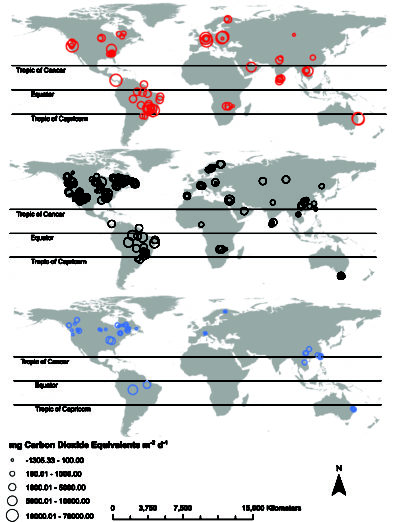The new study synthesizes reservoir CH4, CO2, and N2O emission data with three main objectives: (1) generate a global estimate of GHG emissions from reservoirs, (2) identify the best predictors of these emissions, and (3) consider the effect of methodology on emission estimates.

reservoirs on a CO2-equivalent basis (100-year horizon). Few reservoirs had measurements for all three gases.
The study finds that greenhouse gas emissions from reservoir surfaces account for 0.8 Pg CO2 equivalents per year, with the majority (~80%) of this forcing due to CH4.
The paper was highlighted as the “Editor’s Choice” and is accompanied by a nice podcast interview with study lead-author Bridget Deemer.
